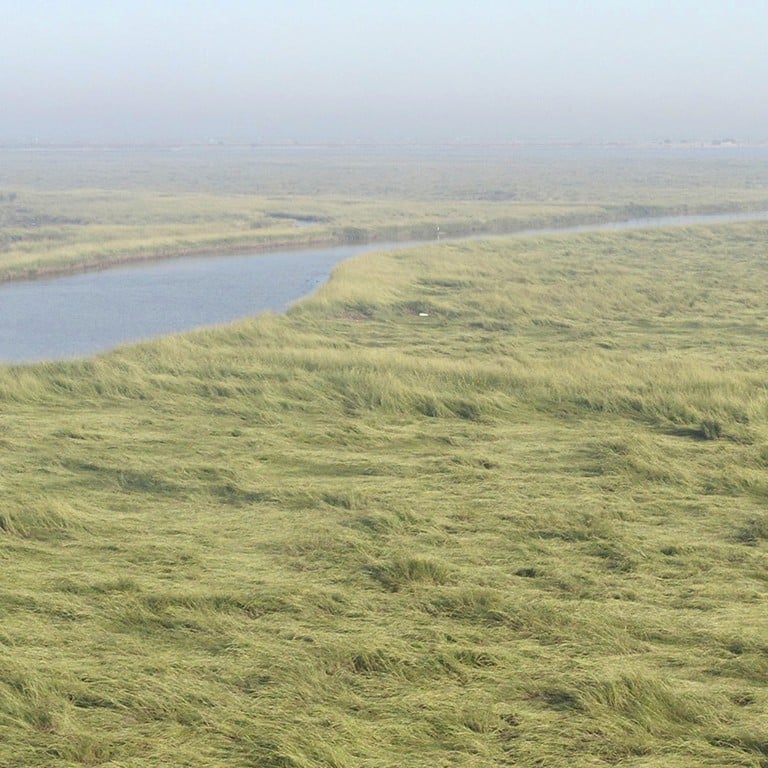
Damage to China’s wetlands by invasive cordgrass highlights fight against biodiversity loss
- As Kunming hosts COP15 conference, new paper shows how much cordgrass has harmed protected coastal areas since being introduced in 1979
- Striking ‘red beach’ landscape, native flora and shorebird habitats threatened by exotic species
Invasion by exotic cordgrass has hampered the conservation of native wetlands in China’s major protected coastal areas, an international team led by Fudan University’s coastal ecology lab found after analysing three decades of data.
They found that cordgrass had invaded four out of seven of the largest coastal wetland protected areas in the country. All are along the Yellow Sea coastline in northeastern China and have been established for at least 20 years.
Cordgrass is native to North America and was introduced to China’s coastlines in 1979 to help prevent erosion and stabilise shorelines because of its tolerance for fluctuating water depth and salinity.
But in 2003, China listed it as an invasive alien species, noting that it “threatened native coastal ecosystems and caused large areas of mangroves to disappear”.
The researchers said controlling the invasion of exotic species and restoring native species were needed to avoid large-scale, long-term dysfunction of protected zones. Establishing these zones is a key biodiversity target in the coming decade.
They also advised against bringing in highly invasive foreign species in the future for local plants and animal habitats to be protected.
COP15: China vows to roll out more ambitious biodiversity plans
“Although protected areas have been achieving success in slowing reclamation-driven loss of iconic wetlands and critical shorebird habitats, this success is being counteracted by escalating exotic plant invasions,” the team wrote in an article published in the peer-reviewed journal Science Advances on Wednesday.
While cordgrass had been intentionally planted inside and outside some protected areas, the “notorious coastal plant invader” had naturally dispersed into those zones, most likely via waterborne seeds and rhizomes, according to the study.
Compared with many native marsh plants, exotic cordgrass is a superior competitor, more tolerant of flooding and wave stresses and more capable of trapping sediments, according to the paper.
Co-author He Qiang, professor of coastal ecology at Fudan University in Shanghai, said China would not see cordgrass completely removed from its soil in the near future because the plant had spread to a vast area.

“Protected areas are intended to safeguard the habitat of indigenous plants and animals and the native biodiversity, not introduced species. We should do more and prioritise these areas to remove cordgrass from them as soon as possible,” he told the Post.
“It would be a pity to see the red beach scenery we enjoy very much disappear,” he said, pointing to wetlands being turned into “green deserts” avoided by waterbirds after being dominated by cordgrass.
How China’s largest algae bloom turns golden beaches into sprawling grasslands
The second session of the COP15 conference will take place next spring when the parties to the UN Convention on Biological Diversity are expected to adopt a post-2020 global biodiversity framework that aims to reverse biodiversity loss during this decade.
He at Fudan University said the study showed that the management of protected areas worldwide should include and strengthen the control of invasive species.
Chinese firm’s wetland destruction shows mangroves still under threat
“It is important to expand the area and number of protected zones and invest more in human resources,” he said. “But this is not enough.
“We need to strengthen the control of invasive species in protected areas, particularly to enhance the monitoring along the borders of protected areas to prevent invaders from spreading into the zones.”

